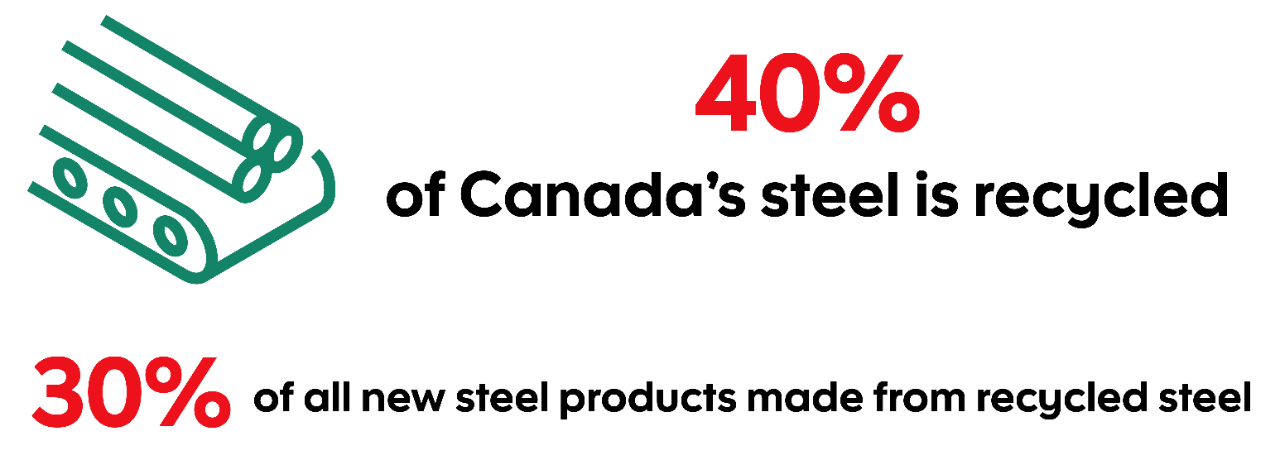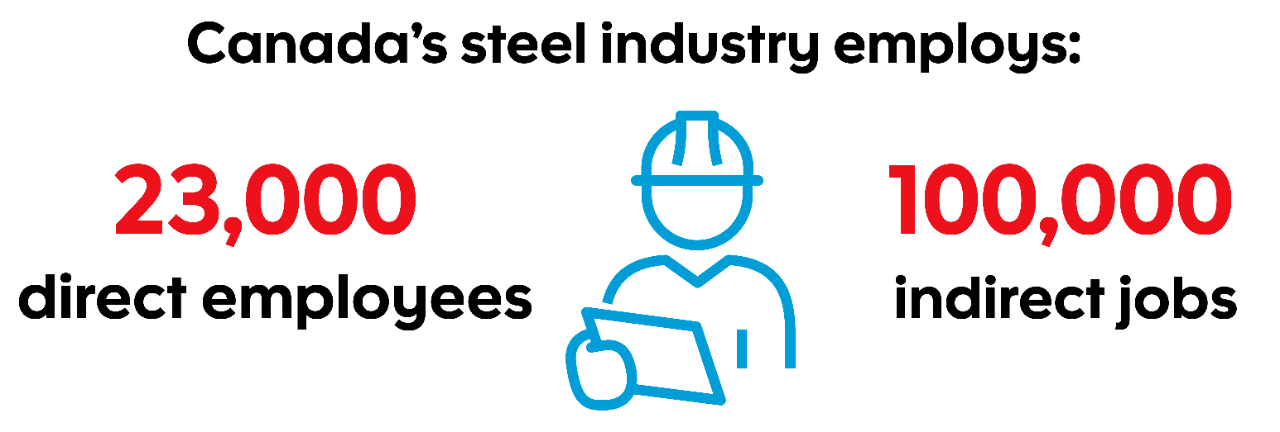Researchers at the University of Alberta are trying to tackle the daunting challenge of decarbonizing the steel industry, which is responsible for 7% of global annual carbon emissions.
“This requires a transformative change in the sector,” says Mohd Adnan Khan, Assistant Professor for Chemical and Materials Engineering at the University of Alberta.
The steel industry is considered a hard-to-abate sector, with intensive requirements for energy, but few if any technologies available to reduce its emissions and its reliance on fossil fuels.

Photo: Dr. Mohd Adnan Khan
Khan leads the Energy Transition Lab at the University of Alberta, which recently received a $100,000 research grant from Scotiabank’s Net-Zero Research Fund. The grant will be used for the energy lab’s research to develop a net-zero vision and find transition pathways for Canada's steel sector, with the aim of bringing maximum economic, social and environment benefits, and ensuring the country’s competitive standing in the global race to produce low-emission steel.
“I hope the results of this study will help the government and the industry in Canada to make key decisions to decarbonize steel,” added Khan.

Source: Transition Accelerator
In 2021, Scotiabank established the $10 million Net-Zero Research Fund, which provides $1 million annually to support leading think-tanks and academic institutions in their research to advance decarbonization solutions and the transition to net-zero.
“Research to help transition the steel industry to a sustainable and cost-effective green model is essential not just for our country but for the entire planet,” says Kim Brand, Vice President and Global Head of Sustainability at Scotiabank.
“Steel production contributes approximately 2% of Canada's carbon emissions. We are glad to support the University of Alberta’s vital research to help reduce the industry’s footprint.”
Canadian steel industry a major employer
According to the Canadian Steel Producers Association (CSPA), the nation’s $15 billion steel industry produces about 13 million tonnes of primary steel a year and over 1 million tonnes of steel pipe and tube products in facilities across the country. In Canada, domestic steel operations directly employ some 23,000 people and support an additional 100,000 indirect jobs.
The sector has reduced CO2 emissions by 25% since 1990. In early 2020, the Association announced a further goal to achieve net-zero by 2050. The Association's goal aligns with the requirements of the June 2021 Canadian Net-Zero Emissions Accountability Act, which enshrines the 2050 net-zero target into Canadian law.
"I believe the Canadian steel sector has one of the lowest emissions of carbon footprints for steel production in the world right now," Khan says. Professor Khan reinforces his view by citing the sector’s implementation of process optimization, energy efficiency improvement, and waste reduction to lower its steel-related emissions.
Even with these efforts, however, Canada’s steel industry continues to be responsible for 2% of GHG emissions nationwide, estimated to be 15 Mt CO2e a year. The largest portion of those carbon emissions emanate from Ontario, where coal, coke and natural gas are used in large blast furnaces for primary steel production.
Blast furnaces are employed for their capability to manage large-scale production by processing substantial volumes of iron ore and coke to produce steel.
Khan asserts that achieving the next stage of decarbonizing steel production poses a significant challenge due to the prohibitively high cost of the technology required for steel to be produced at a net-zero carbon footprint.
That’s why Khan and his team’s initial focus is to identify opportunities to reduce the steel industry’s carbon emissions while factoring in their economic feasibility. The team is currently targeting the primary steel production, which is concentrated in southern Ontario.
Carbon emissions are inevitable in steel making
Primary steel is produced from mined ore and coal, whereas secondary steel is crafted from recycled scrap steel. Both of these steel making processes produce carbon dioxide, CO2. Additionally, to increase steel’s hardness and durability, its carbon content is augmented through various methods.
Heat is required to facilitate the chemical processes involved in extracting iron from mined iron ore to make steel. Coal, coke, or natural gas is used to generate heat in the traditional blast furnace method of steel production and also used as reducing agents to reduce iron ore. Khan’s research explores alternative clean or green-fuel sources or substances for steel production, and this is where hydrogen is showing a lot of potential to decarbonize the existing process.
“What we are focusing on right now is assessing the role of hydrogen in decarbonizing steel,” he said, “we are exploring how hydrogen can be a viable net-zero energy carrier.”
Hydrogen is increasingly used as an energy source.
Khan cited the example of ArcelorMittal Dofasco, which received $1.8 billion from the federal and provincial governments to decarbonize its steel plant in Hamilton, Ont. Arcelor is Canada's leading flat steel producer, operating a 2.5 million tonne capacity furnace, which relies on new technology called iron-electric arc furnace (DRI-EAF). DRI-EAF technology has a considerably lower carbon footprint, removes coal from the ironmaking process and had greater future potential. The furnace was constructed to be ‘hydrogen ready.’ While it will initially operate on natural gas, this technology can later transition to use green hydrogen as a clean energy input when a sufficient, cost-effective supply of green hydrogen becomes available, according to ArcelorMittal Dofasco.
“When you use coal, you have a lot of emissions. The idea is that switching to what we call DRI facilities provides an alternative to the traditional way of making steel from the integrated blast furnaces route, which largely uses coal,” Khan said.
"We are also assessing how the Canadian steel sector can act as an anchor tenant to build up that hydrogen demand," Khan said. "That will not only help decarbonize steel but will also help decarbonize other sectors.”
Research exploring use of carbon capture to decarbonize steel
Khan’s research project, which began in mid-September, is also exploring how carbon capture and storage, which involves trapping carbon dioxide emissions to prevent them from entering the atmosphere, can be part of a broader strategy to decarbonize the steel industry.
Carbon, capture and storage falls into three categories in line with the general manufacturing processes: post-combustion carbon capture, the primary method used in existing power plants; pre-combustion carbon capture, largely used in industrial processes; and oxy-fuel combustion systems, when fuel is burned using pure oxygen to produce flames made from CO2 and steam to make capturing carbon alone a lot easier.
Carbon capture is a "big and key piece of the entire puzzle,” reinforces Khan.

Source: Natural Resources Canada, and World Steel Association
Steel demand is projected to increase
Steel is the most recycled material in the world. Owing to its versatility and durability, the prevalence of steel in our daily lives is unmistakable. It is used in everything from household appliances to construction materials, transportation, and various types of machinery. Steel is needed even when creating technology to transition into cleaner energy, such as wind turbines and solar panels.
"Decarbonizing secondary or recycled steel is more accessible because it can primarily use electricity and electric arc furnaces to make it from scrap," Khan said.
In Canada, about 40% of steel is recycled, and globally it’s approximately 30%, said Khan. "And that's the low-hanging fruit,” he added.
But secondary steel on its own cannot meet rising global demand. The International Energy Agency says global steel demand is projected to increase by more than a third by 2050.
With strong competition from countries such as China — which produces an estimated 50% of the world’s steel — making Canadian steel more competitive is essential.
“China makes very low-cost steel, and that is why this entire transition of steel towards low-emission steel is even more challenging,” said Khan. “Because you want to ensure that Canadian steel is still competitive on a global market on a price basis while investing in emissions reduction technology,” he said.
Khan and his team are also looking at what's needed from a policy perspective for government support for low-cost carbon steel in the country, especially after Canada launched its initiative to help companies reduce emissions.
“I hope that the results of the study will help inform key decisions for decarbonizing steel production in Canada.”


